| Listing 1 - 10 of 21 | << page >> |
Sort by
|
Book
ISBN: 9789463561471 Year: 2019 Publisher: Culemborg Van Duuren Informatica
Abstract | Keywords | Export | Availability | Bookmark
 Loading...
Loading...Choose an application
- Reference Manager
- EndNote
- RefWorks (Direct export to RefWorks)
Uit onderzoek blijkt dat 40% van de mensen slechts twee tot vier verschillende wachtwoorden gebruikt. 10% gebruikt zelfs maar één wachtwoord voor álle accounts. Bijna de helft van de mensen wijzigt het wachtwoord niet eens als het gehackt is.Als je wachtwoord dan op straat komt te liggen, is het kinderspel voor een crimineel om zich op meerdere plekken als jou voor te doen. Daarmee geef je criminelen de kans vrienden en familie te beduvelen. En je brengt je bedrijf in gevaar - meer dan 80% van de datalekken zijn terug te voeren naar wachtwoorden zie zwak of hergebruikt zijn.Al jaren zijn er geluiden dat wachtwoorden binnenkort verleden tijd zijn. Wachtwoorden zijn echter goed ingeburgerd en blijven nog wel even. Je kunt beter orde op zaken stellen en je digitale weerbaarheid vergroten. De oplossing is al jaren onder handbereik: het is tijd om een wachtwoordmanager te omarmen. Als je eenmaal een wachtwoordmanager gebruikt is het minder werk én veiliger dan andere werkwijzen om wachtwoorden te onthouden.Dit boek geeft je achtergrondinformatie over het waarom van een wachtwoordmanager. Inloggen op een wachtwoordmanager is zo gebeurd. Zeker op een smartphone, tablet of moderne computer waar je kunt inloggen met een vingerafdruk of gezichtsherkenning.Als je al overtuigd bent van het nut van een wachtwoordmanager kun je direct door naar de hoofdstukken over de installatie en het gebruik van Bitwarden.Bron : http://www.managementboek.nl
681.324 --- Internet --- Cybercrime --- Wachtwoorden --- Computernetwerken --- Beveiliging --- Computercriminaliteit --- Informatietechnologie --- Informatique et traitement des données --- criminalité informatique --- Conceptcomputercriminaliteit --- Informatica en gegevensverwerking --- Computer architecture. Operating systems --- internet --- computerbeveiliging --- computercriminaliteit --- IT --- Informatique et traitement des données --- criminalité informatique
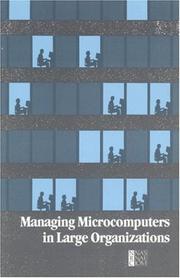
ISBN: 0309034922 9786610222223 1280222220 0309541441 0585144338 9780585144337 9780309034920 Year: 1985 Publisher: Washington, D.C. National Academy Press
Abstract | Keywords | Export | Availability | Bookmark
 Loading...
Loading...Choose an application
- Reference Manager
- EndNote
- RefWorks (Direct export to RefWorks)
Business --- Office practice --- Microcomputers --- Gestion --- Bureautique --- Micro-ordinateurs --- Data processing --- Congresses --- Automation --- Management --- Informatique --- Congrès --- Congrès --- Secretarial practice --- Trade --- Office management --- Economics --- Commerce --- Industrial management --- Kantoren. Automatisering. (Congres) --- Micro-ordinatoren. (Congres) --- Affaires. Traitement des données. (Congrès) --- Bureaux. Automation. (Congrès) --- Micro-ordinateurs. (Congrès) --- Business - Data processing - Management - Congresses. --- Office practice - Automation - Management - Congresses. --- Microcomputers - Congresses. --- Handelszaken. Dataverwerking. (Congres)
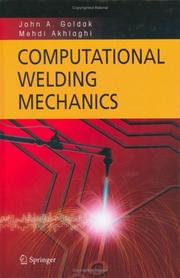
ISBN: 1280618566 9786610618569 0387232885 0387232877 1441935991 Year: 2005 Publisher: New York : Springer,
Abstract | Keywords | Export | Availability | Bookmark
 Loading...
Loading...Choose an application
- Reference Manager
- EndNote
- RefWorks (Direct export to RefWorks)
Computational Welding Mechanics (CWM) provides readers with a complete introduction to the principles and applications of computational welding including coverage of the methods engineers and designers are using in computational welding mechanics to predict distortion and residual stress in welded structures, thereby creating safer, more reliable and lower cost structures. Drawing upon years of practical experience and the study of computational welding mechanics the authors instruct the reader how to: - understand and interpret computer simulation and virtual welding techniques including an in depth analysis of heat flow during welding, microstructure evolution and distortion analysis and fracture of welded structures, - relate CWM to the processes of design, build, inspect, regulate, operate and maintain welded structures, - apply computational welding mechanics to industries such as ship building, natural gas and automobile manufacturing. Ideally suited for practicing engineers and engineering students, Computational Welding Mechanics is a must-have book for understanding welded structures and recent technological advances in welding, and it provides a unified summary of recent research results contributed by other researchers.
Welding --- Metal-work --- Data processing. --- Forging --- Manufacturing processes --- Sealing (Technology) --- Mechanical engineering. --- Engineering. --- Industrial engineering. --- Mechanical Engineering. --- Machinery and Machine Elements. --- Industrial and Production Engineering. --- Management engineering --- Simplification in industry --- Engineering --- Value analysis (Cost control) --- Construction --- Industrial arts --- Technology --- Engineering, Mechanical --- Machinery --- Steam engineering --- Machinery. --- Production engineering. --- Manufacturing engineering --- Process engineering --- Industrial engineering --- Mechanical engineering --- Machines --- Manufactures --- Power (Mechanics) --- Motors --- Power transmission --- Curious devices --- Soudage --- Traitement des données --- Traitement des données

ISBN: 2735102084 2735125653 9782735102082 Year: 1987 Volume: 9 Publisher: Paris: Maison des sciences de l'homme,
Abstract | Keywords | Export | Availability | Bookmark
 Loading...
Loading...Choose an application
- Reference Manager
- EndNote
- RefWorks (Direct export to RefWorks)
Norbert Aujoulat est responsable du département d’art pariétal au Centre National de la préhistoire à Périgueux (ministère de la Culture et de la Communication/ sous-direction de l’Archéologie). L’analyse descriptive d’une peinture ou d’une gravure préhistorique reposant en partie sur sa reproduction, le transfert de l’image implique donc une méthodologie spécifique et un matériel parfaitement adapté. Ce travail est à la fois une synthèse des travaux antérieurs relatifs aux techniques de relevé et le résultat de plusieurs années de recherches personnelles concernant en particulier l’enregistrement photographique des données et leur traitement en laboratoire par ordinateur. Conçu dans un esprit très didactique, il se présente comme un véritable manuel, indispensable à toute recherche dans le domaine de l’art pariétal. Norbert Aujoulat is head of the cave art section at the National Prehistory Centre in Perigueux (Ministry of Culture and Communication/Department of Archaeology). The descriptive analysis of a prehistoric painting or engraving depends, to a great extent, on its reproduction, which, in its turn, depends on a specific methodology and appropriate material. This book is a synthesis of earlier work dealing with reproduction techniques and is also the result of several years of personal research into the photographic recording of data and their Processing by computer in the laboratory. Highly didactic, it is intended as a practical manual, indispensable for any research in the field of cave art.
Cave paintings --- Archaeology --- Paleolithic period --- Art rupestre --- Archéologie --- Paléolithique --- Methodology --- Méthodologie --- Photography in archaeology --- Rock paintings --- Petroglyphs --- France --- Antiquities --- -Rock paintings --- -Petroglyphs --- -Carvings, Rock --- Engravings, Rock --- Rock carvings --- Rock engravings --- Rock inscriptions --- Stone inscriptions --- Inscriptions --- Picture-writing --- Paintings, Rock --- Pictured rocks --- Rock drawings --- Art, Prehistoric --- Painting, Prehistoric --- Archeology --- Anthropology --- Auxiliary sciences of history --- History --- Antiquities. --- Photography in archaeology. --- Methodology. --- -Methodology --- Archéologie --- Paléolithique --- Méthodologie --- Carvings, Rock --- Archaeology - Methodology --- Rock paintings - France --- Petroglyphs - France --- France - Antiquities --- méthodologie --- diachronie --- manuel --- relevé --- grotte de Lascaux --- œuvre pariétale --- colorimétrie --- donnée morphochromatique --- traitement des données --- fac-similé --- Lascaux II
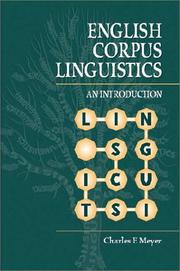
ISBN: 052100490X 0521808790 1107124832 0511176791 0511042000 051115769X 0511329806 0511606311 1280436409 0511044755 9780511042003 9780521808798 9780521004909 9780511157691 9780511044755 9780511606311 9781280436406 9786610436408 6610436401 9781107124837 9780511176791 9780511329807 Year: 2002 Volume: *3 Publisher: Cambridge, UK New York Cambridge University Press
Abstract | Keywords | Export | Availability | Bookmark
 Loading...
Loading...Choose an application
- Reference Manager
- EndNote
- RefWorks (Direct export to RefWorks)
English Corpus Linguistics is a step-by-step guide to creating and analyzing linguistic corpora. It begins with a discussion of the role that corpus linguistics plays in linguistic theory, demonstrating that corpora have proven to be very useful resources for linguists who believe that their theories and descriptions of English should be based on real rather than contrived data. Charles F. Meyer goes on to describe how to plan the creation of a corpus, how to collect and computerize data for inclusion in a corpus, how to annotate the data that are collected, and how to conduct a corpus analysis of a completed corpus. The book concludes with an overview of the challenges that corpus linguists face to make both the creation and analysis of corpora much easier undertakings than they currently are. Clearly organized and accessibly written, this book will appeal to students of linguistics and English language.
English language --- Computational linguistics. --- Research --- Data processing. --- Discourse analysis --- Computerlinguïstiek. --- Corpus linguistics. --- Automatic language processing --- Computational linguistics --- Computer linguistics --- Computerlinguïstiek --- Language and languages -- Data processing --- Language data processing --- Linguistics -- Data processing --- Linguistique -- Informatique --- Linguistique -- Traitement des données --- Linguistique computationnelle --- Linguistique informatique --- Linguistique informatisée --- Natural language processing (Linguistics) --- Taalwetenschap -- Gegevensverwerking --- Mathematical linguistics --- #KVHA:Linguistiek; Engels --- #KVHA:Corpuslinguistiek; Engels --- Germanic languages --- Language and languages --- Linguistics --- Applied linguistics --- Cross-language information retrieval --- Multilingual computing --- Discourse analysis&delete& --- Data processing --- Research&delete& --- Pragmatics --- Arts and Humanities --- Language & Linguistics --- English language - Research - Data processing. --- English language - Discourse analysis - Data processing. --- Inglés (Lengua) --- Lingüística --- Lingüística aplicada. --- Corpus (Lingüística). --- Análisis del discurso --- Análisis del discurso. --- Informática. --- Metodología.
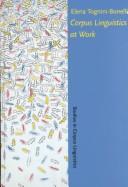
ISBN: 9027222762 1588110613 9027285446 9786613092496 1283092492 9789027222763 9789027285447 9781283092494 6613092495 9781588110619 Year: 2001 Volume: 6 Publisher: Amsterdam ; Philadelphia [Pa.] : J. Benjamins,
Abstract | Keywords | Export | Availability | Bookmark
 Loading...
Loading...Choose an application
- Reference Manager
- EndNote
- RefWorks (Direct export to RefWorks)
The book offers a combined discussion of the main theoretical, methodological and application issues related to corpus work. Thus, starting from the definition of what is a corpus and why reading a corpus calls for a different methodology from reading a text, the underlying assumptions behind corpus work are discussed. The two main approaches to corpus work are discussed as the "corpus-based" and the "corpus-driven" approach and the theoretical positions underlying them explored in detail. The book adopts and exemplifies the parameters of the corpus-driven approach and posits a new unit of linguistic description defined systematically in the light of corpus evidence. The applications where the corpus-driven approach is exemplified are language teaching and contrastive linguistics. Alternating between practical examples and theoretical evaluation, the reader is led step-by-step to a detailed understanding of the issues involved in corpus work and, at the same time, tempted to explore for himself some of the major applications where a corpus-driven methodology can reveal unprecedented insights into linguistic patterning.
Linguistique --- Linguistique informatique --- Linguistique appliquee --- Linguistics --- Computational linguistics --- Applied linguistics --- Methodologie --- Methodology --- Automatic language processing --- Computer linguistics --- Computerlinguïstiek --- Language and languages -- Data processing --- Language data processing --- Linguistics -- Data processing --- Linguistique -- Informatique --- Linguistique -- Traitement des données --- Linguistique appliquée --- Linguistique computationnelle --- Linguistique informatisée --- Natural language processing (Linguistics) --- Taalwetenschap -- Gegevensverwerking --- Toegepaste taalwetenschap --- Lexicology. Semantics --- Mathematical linguistics --- English language --- Linguistique appliquée --- Méthodologie --- Linguistique - Methodologie --- Linguistics - Methodology --- Corpora (Linguistics) --- Computational linguistics. --- Applied linguistics. --- Language and languages --- Cross-language information retrieval --- Multilingual computing --- Corpus-based analysis (Linguistics) --- Corpus linguistics --- Linguistic analysis (Linguistics) --- Data processing
Book
ISBN: 902723034X 1556193831 9789027230348 9781556193835 9789027282002 9027282005 1283469367 9786613469366 Year: 1996 Volume: 31 Publisher: Amsterdam Philadelphia John Benjamins Pub. Co.
Abstract | Keywords | Export | Availability | Bookmark
 Loading...
Loading...Choose an application
- Reference Manager
- EndNote
- RefWorks (Direct export to RefWorks)
Lexical Functions in Lexicography and Natural Language Processing is entirely devoted to the topic of Lexical Functions, which have been introduced in the framework of the Meaning-Text Theory (MTT) as a means for describing restricted lexical co-occurrence and derivational relations. It provides detailed background information, comparative studies of other known proposals for the representation of relations covered by Lexical Functions, as well as a selection of most important works done on and with Lexical Functions in lexicography and computational linguistics. This volume provides excellent
Computational linguistics. --- Functionalism (Linguistics). --- Lexicography. --- Lexicology. --- Meaning-text theory (Linguistics). --- Automatic language processing --- Computational linguistics --- Computer linguistics --- Computerlinguïstiek --- Fonctionalisme (Linguistique) --- Functionalism (Linguistics) --- Functionalisme (Taalwetenschap) --- Language and languages -- Data processing --- Language data processing --- Lexicografie --- Lexicographie --- Lexicography --- Lexicologie --- Lexicology --- Linguistics -- Data processing --- Linguistique -- Informatique --- Linguistique -- Traitement des données --- Linguistique computationnelle --- Linguistique informatique --- Linguistique informatisée --- Natural language processing (Linguistics) --- Taalwetenschap -- Gegevensverwerking --- Meaning-text theory (Linguistics) --- Meaning-text model (Linguistics) --- Linguistics --- English language --- Language and languages --- Encyclopedias and dictionaries --- Functional analysis (Linguistics) --- Functional grammar --- Functional linguistics --- Functional-structural analysis (Linguistics) --- Grammar, Functional --- Grammatical functions --- Structural linguistics --- Applied linguistics --- Cross-language information retrieval --- Mathematical linguistics --- Multilingual computing --- Data processing --- ENGLISH LANGUAGE --- LEXICOLOGY --- COMPUTATIONAL LINGUISTICS --- FUNCTIONALISM (LINGUISTICS) --- LEXICOGRAPHY
Periodical
Abstract | Keywords | Export | Availability | Bookmark
 Loading...
Loading...Choose an application
- Reference Manager
- EndNote
- RefWorks (Direct export to RefWorks)
Accounting --- Business --- Expert systems (Computer science) --- Artificial intelligence --- Comptabilité --- Gestion --- Systèmes experts (Informatique) --- Intelligence artificielle --- Artificial intelligence. --- Gestion. --- Intelligence artificielle. --- Traitement des données. --- Système expert. --- Data processing --- Informatique --- Data processing. --- Knowledge-based systems (Computer science) --- Systems, Expert (Computer science) --- Electronic data processing --- AI (Artificial intelligence) --- Artificial thinking --- Electronic brains --- Intellectronics --- Intelligence, Artificial --- Intelligent machines --- Machine intelligence --- Thinking, Artificial --- Automated accounting systems --- Computerized accounting systems --- Machine accounting --- Artificial Intelligence. --- Accounting & Tax. --- Computer systems --- Soft computing --- Bionics --- Cognitive science --- Digital computer simulation --- Logic machines --- Machine theory --- Self-organizing systems --- Simulation methods --- Fifth generation computers --- Neural computers --- Comptabilité --- Systèmes experts (Informatique) --- Traitement des données. --- Système expert. --- Taxes --- Accountancy --- Business, Economy and Management --- Information Technology --- Social Sciences --- Accounting and Auditing --- Business Management --- Finance --- Trade and Commerce --- General and Others --- Behavioral Science (Psychology) and Counselling
Multi
ISSN: 01662481 ISBN: 9780123743459 0123743451 9786613920614 1283608162 0080921884 Year: 2009 Volume: 33 Publisher: Amsterdam ; Boston : Elsevier,
Abstract | Keywords | Export | Availability | Bookmark
 Loading...
Loading...Choose an application
- Reference Manager
- EndNote
- RefWorks (Direct export to RefWorks)
Geomorphometry is the science of quantitative land-surface analysis. It draws upon mathematical, statistical, and image-processing techniques to quantify the shape of earth's topography at various spatial scales. The focus of geomorphometry is the calculation of surface-form measures (land-surface parameters) and features (objects), which may be used to improve the mapping and modelling of landforms to assist in the evaluation of soils, vegetation, land use, natural hazards, and other information. This book provides a practical guide to preparing Digital Elevation Models (DEM) for an
Geology. Earth sciences --- Pedology --- Geomorphology --- Digital soil mapping --- Image processing --- Geomorphology. --- Soil science. --- Géomorphologie --- Cartographie pédologique par ordinateur --- Traitement d'images --- Pédologie --- Computer simulation --- Data processing --- Mathematical models --- Methodology --- Digital techniques. --- Simulation par ordinateur --- Informatique --- Modèles mathématiques --- Méthodologie --- Techniques numériques --- Paysage --- Landscape --- Facteur climatique --- climatic factors --- Gestion des eaux --- water management --- Topographie --- Topography --- Application des ordinateurs --- computer applications --- Mesure --- Measurement --- Instrument de mesure --- Measuring instruments --- design --- Logiciel --- Computer software --- Traitement des données --- Modèle --- Models --- Cartographie --- cartography --- Aménagement du paysage --- Landscaping --- Développement régional --- Regional development --- Végétation --- vegetation --- Glissement de terrain --- Landslides --- Hydrologie --- Hydrology --- Météorologie --- Meteorology --- Agriculture faible niveau intrants --- Low input agriculture --- Digital soil mapping. --- Computer simulation. --- Data processing. --- Mathematical models. --- Methodology. --- Géomorphologie --- Cartographie pédologique par ordinateur --- Pédologie --- Modèles mathématiques --- Méthodologie --- Techniques numériques --- vegetation. --- Pedology (Soil science) --- Agriculture --- Earth sciences --- Geomorphic geology --- Physiography --- Physical geography --- Landforms --- Soil science --- Digital techniques --- Geomorphology - Computer simulation --- Geomorphology - Data processing --- Geomorphology - Mathematical models --- Geomorphology - Methodology --- Image processing - Digital techniques --- Dems --- Tapes
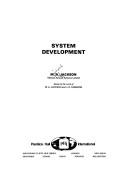
ISBN: 0138803285 9780138803285 Year: 1983 Volume: 58 Publisher: Englewood Cliffs: Prentice Hall,
Abstract | Keywords | Export | Availability | Bookmark
 Loading...
Loading...Choose an application
- Reference Manager
- EndNote
- RefWorks (Direct export to RefWorks)
Computer. Automation --- System design --- Systèmes, Conception de --- Jackson system development method --- 681.3*D2 --- 681.3*D22 --- 681.3 --- 681.3.02 --- Systeemanalyse (Systeemontwerp) --- Systeemontwikkeling --- Systeemanalyse: JSD --- JSD method --- Electronic data processing --- Software engineering: protection mechanisms; standards--See also {681.3*K63}; {681.3*K51} --- Tools and techniques: decision tables; flow charts; modules and interfaces; programmer workbench; software libraries; structured programming; top-down programming; user interfaces (Software engineering) --- Structured techniques --- Jackson system development method. --- 681.3*D22 Tools and techniques: decision tables; flow charts; modules and interfaces; programmer workbench; software libraries; structured programming; top-down programming; user interfaces (Software engineering) --- 681.3*D2 Software engineering: protection mechanisms; standards--See also {681.3*K63}; {681.3*K51} --- Systèmes, Conception de --- Handelszaken. Dataverwerking. --- Systèmes. --- Affaires. Traitement des données. --- Systemen. --- Business --- System engineering
| Listing 1 - 10 of 21 | << page >> |
Sort by
|

 Search
Search Feedback
Feedback About UniCat
About UniCat  Help
Help News
News